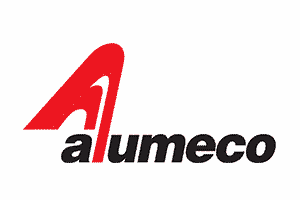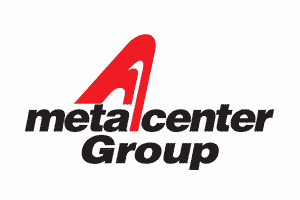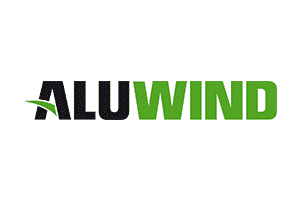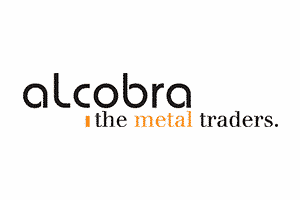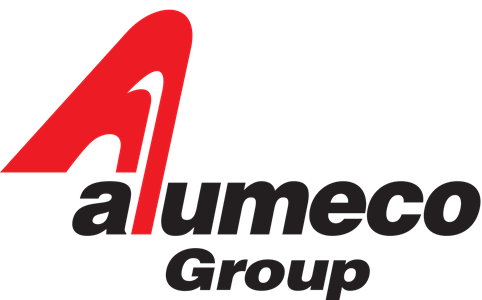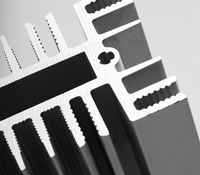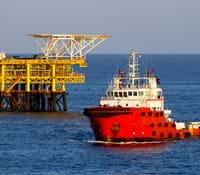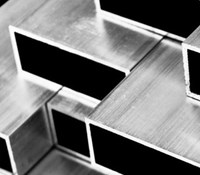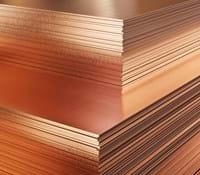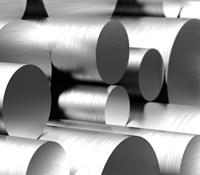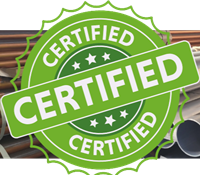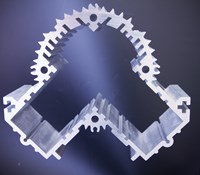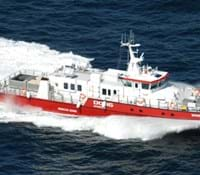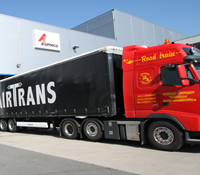Alloy guide
Alumeco offers a wide selection of stainless steel alloys with different properties. On this page you can get an overview of your options. Do not hesitate to contact us for further guidance.
| Zr+Ti | Ga | Mn+Cr | ||||||
|---|---|---|---|---|---|---|---|---|
| Name | Alloy type | Usage | Min | Max | Min | Max | Min | Max |
| EN 1.4016, AISI 430 | Stainless Steel | EN 1.4016, AISI 430 is a ferritic alloy with 16% chromium and suited for mildly corrosive environments. This alloy is commonly used for household appliances and cutlery, and it is not recommended for welding as this may cause intergranular corrosion. | ||||||
| EN 1.4021, AISI 420 | Stainless Steel | EN 1.4021, AISI 420 is a martensitic alloy that is corrosion resistant in water and steam. Martensitic stainless steel can be hardened and sharpened and is therefore commonly used for knife blades and surgical instruments, but also for springs, brake discs and press plates. This alloy is neither weldable nor formable. | ||||||
| EN 1.4057, AISI 431 | Stainless Steel | EN 1.4057, AISI 431 is a martensitic alloy with 15% chromium. The alloy is hardenable and has a fairly good corrosion resistance compared to other martensitic steel types. This alloy is particularly used for making knives and axels. | ||||||
| EN 1.4104, AISI 430F | Stainless Steel | Martensitic steel type containing up to 0.35% sulfur, which makes it suitable for machining. Can be used when you want a magnetic but machinable steel grade. | ||||||
| EN 1.4301, AISI 304 | Stainless Steel | EN 1.4301, AISI 304 is an all-purpose austenitic alloy that is highly weldable, formable and highly resistant to intergranular corrosion. The alloy is often used in the food, chemical and pharmaceutical industries. EN 1.4301, AISI 304 is a very common alloy and can be used in a variety of climates and environments. | ||||||
| EN 1.4301, AISI 304 / EN 1.4307, AISI 304L | Stainless Steel | EN 1.4301, AISI 304 is an all-purpose austenitic alloy that is highly weldable, formable and highly resistant to intergranular corrosion. The alloy is often used in the food, chemical and pharmaceutical industries. Sheets and plates in this alloy are double certified according to EN 1.4307, AISI 304L, a low-carbon alloy, unless otherwise specified. EN 1.4301, AISI 304 is a very common alloy and can be used in a variety of climates and environments. | ||||||
| EN 1.4305, AISI 303 | Stainless Steel | EN 1.4305, AISI 303 is an austenitic alloy containing sulfur. This alloy is very suitable for machining and is often used for bolts, screws, gears and other machined parts. The sulfur in EN 1.4305, AISI 303 causes this alloy to be slightly less corrosion resistant than EN 1.4301, AISI 304 and 1.4307, AISI 304L. | ||||||
| EN 1.4307, AISI 304L | Stainless Steel | EN 1.4307, AISI 304L is a low-carbon austenitic alloy, which makes it highly weldable, formable and highly resistant to intergranular corrosion. The alloy is often used in the food, chemical and pharmaceutical industries. EN 1.4307, AISI 304L is a very common alloy and can be used in a variety of climates and environments. | ||||||
| EN 1.4404, AISI 316L | Stainless Steel | EN 1.4404, AISI 316L is a low-carbon austenitic alloy that is highly weldable and highly resistant to intergranular corrosion. This alloy contains molybdenum, which increases the corrosion resistancy and makes it suitable for aggressive environments such as chemical or textile manufacturing as well as equipment for the food, beverage and medical industries. | ||||||
| EN 1.4408 | Stainless Steel | “EN 1.4408, is an austenitic alloy highly resistant to intergranular corrosion. This alloy contains molybdenum, which increases the corrosion resistance and makes it suitable for aggressive environments such as chemical or textile manufacturing as well as equipment for the food, beverage and medical industries. “ | ||||||
| EN 1.4418, AISI S165M | Stainless Steel | Acid resistant martensitic steel, mostly available as rods or bars. This alloy contains only 1% molybdenum and 4-6% nikkel, which makes the steel mechanically strong. This alloy is often used for hydraulic equipment, sometimes plated with hard-chromium. Suited for offshore use. | ||||||
| EN 1.4432, AISI 316L | Stainless Steel | EN 1.4432, AISI 316L is a low-carbon austenitic alloy with a relatively high molybdenum content. This makes the alloy very resistant to corrosion, non-oxidizing acids and chloride-containing media. The low carbon content means that EN 1.4432, AISI 316L is particularly resistant to intergranular corrosion. | ||||||
| EN 1.4462, SAF 2205 | Stainless Steel | EN 1.4462, SAF 2205 is a duplex stainless steel, which is a combination of ferritic (55%) and austenitic (45%) stainless steel. The chromium content of duplexes is high (22-25%), while the nickel content is around 4%. This alloy is highly resistant to localized corrosion and stress corrosion cracking, and it offers high mechanical strength. | ||||||
| EN 1.4541, AISI 321 | Stainless Steel | EN 1.4541, AISI 321 is an austenitic alloy with titanium, which makes it suitable for higher temperatures. The titanium also ensures that the alloy is weldable in all thicknesses with no risk of intergranular corrosion. However, the titanium content means that the alloy is not well suited for polishing. | ||||||
| EN 1.4571, AISI 316Ti | Stainless Steel | EN 1.4571, AISI 316Ti is an austenitic alloy with molybdenum and titanium. The molybdenum makes the alloy highly resistant to all types of corrosion. The alloy is an alternative to EN 1.4404, AISI 316L and can be used in higher temperatures due to the titanium. The titanium also ensures that the alloy is weldable in all thicknesses with no risk of intergranular corrosion. | ||||||
| EN 10088-2 | Stainless Steel | |||||||
| S235JR | Stainless Steel | |||||||
